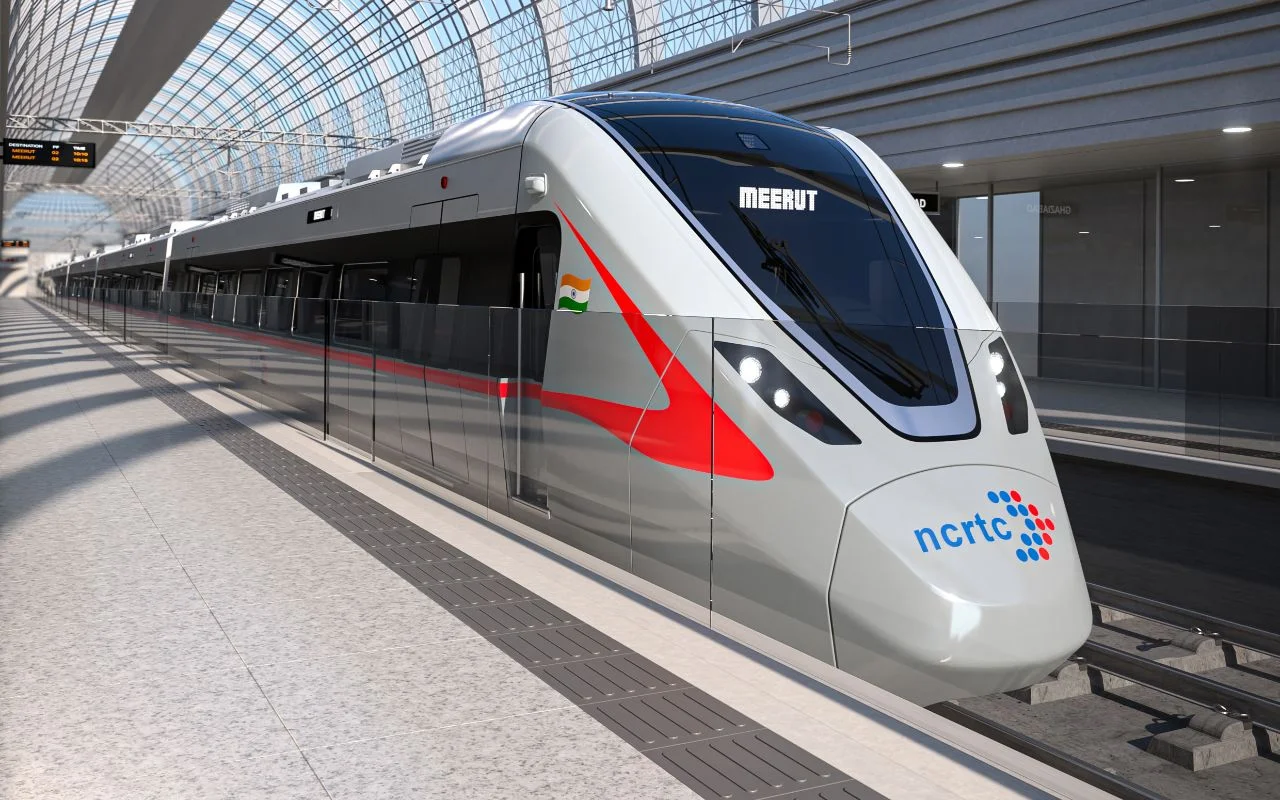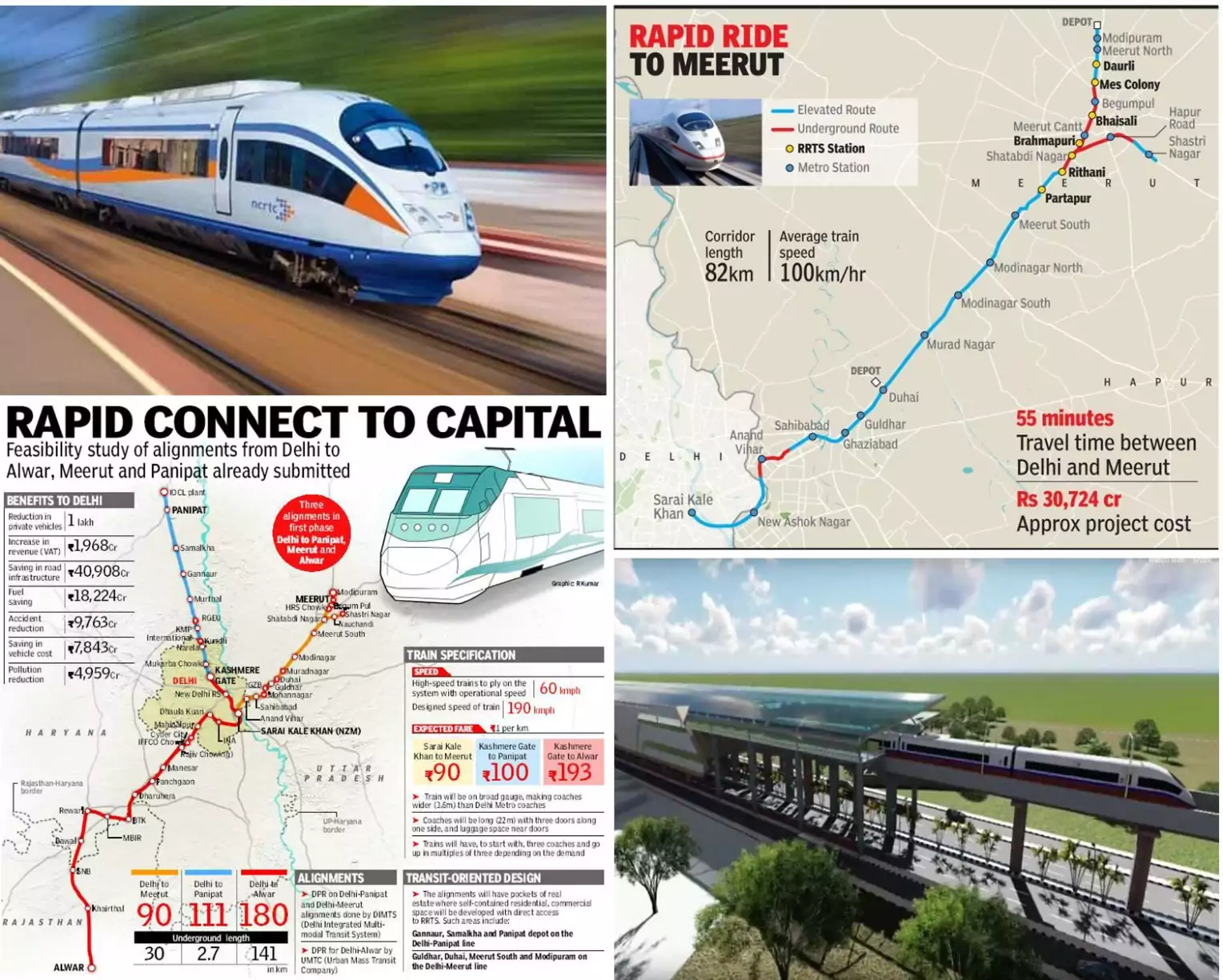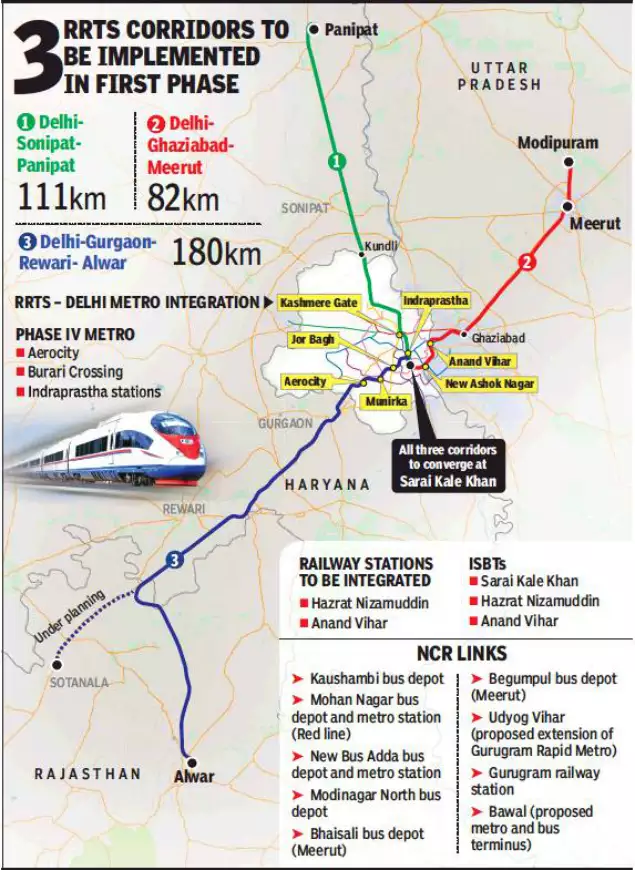RRTS ROUTE OF Delhi Gurugram – SNB – Alwar Corridor

01 March, 2023
 PM Gati Shakti Yojna along with NLP (National Logistic Policy) pushes RRTS to fruition!
PM Gati Shakti Yojna along with NLP (National Logistic Policy) pushes RRTS to fruition!
The Delhi-Gurugram-SNB-Alwar corridor also includes the construction of the Rapid Rail Transit System (RRTS), a high-speed commuter rail service that will run along the same alignment as the KMPExpressway. The RRTS is expected to reduce the travel time between Delhi and Alwar to just 1 hour, making it an attractive option for commuters and travelers.
The RRTS trains will operate at a maximum speed of 160 km/hr, with a frequency of one train every 5-10 minutes during peak hours. The trains will have a capacity of up to 1,000 passengers, with modern amenities such as Wi-Fi, CCTV cameras, and comfortable seating.
 The RRTS project is being implemented by the National Capital Region Transport Corporation (NCRTC), and is expected to be completed by 2025. The project will have a significant impact on the development of the region, providing fast and reliable connectivity between Delhi, Gurugram, SNB, and Alwar.
The RRTS project is being implemented by the National Capital Region Transport Corporation (NCRTC), and is expected to be completed by 2025. The project will have a significant impact on the development of the region, providing fast and reliable connectivity between Delhi, Gurugram, SNB, and Alwar.
It is also expected to reduce traffic congestion on the roads, thereby reducing air pollution and improving the overall quality of life in the region.
The RRTS is a part of the larger RRTS network that is being developed in the National Capital Region (NCR) of India. The network will connect Delhi with other cities in the region such as Meerut, Panipat, and Aligarh, providing fast and reliable connectivity to millions of people in the region. The RRTS is expected to transform the way people travel in the NCR and contribute to the economic and social development of the region.
The route of the Delhi-Gurugram-SNB-Alwar corridor RRTS is as follows:
Starting from Sarai Kale Khan in Delhi, the RRTS will run elevated up to Rajiv Chowk in Gurugram. From Rajiv Chowk, the RRTS will run underground up to SNB (Shahjahanpur-Neemrana-Behror) and then elevated up to the final destination in Alwar.
The RRTS will have a total of 15 Stations and 1 Depot along the route, including:
- Sarai Kale Khan Station
- INA Station
- Munirka Station
- Aerocity Station
- Udyog Vihar Station
- Sector 17 Station
- Rajiv Chowk Station
- Kherki Daula Station
- Manesar Station
- Panchgaon Station
- Bilaspur Chowk Station
- Dharuhera Station
- MBIR Station
- Rewari Station
- Bawal Station
- SNB Station
- Dharuhera Depot
The RRTS will provide seamless connectivity to other modes of transport such as metro, buses, and inter-state railways, making it easier for people to travel within and between cities in the NCR. The RRTS is expected to provide fast and reliable connectivity to millions of people in the region and contribute to the economic and social development of the region.
This video from HR Arvind Vlogs explains the route in great detail.
https://www.youtube.com/watch?v=2y32tW_TflA